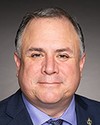Mr. Speaker, regarding parts (a) to (d) and (p) to (v) of the question, due to security and safety issues, the names and locations of the contractors involved in the assault-style firearms compensation program, ASFCP, cannot be disclosed.
On December 7, 2023, Public Services and Procurement Canada, PSPC, launched a competitive process to procure services for the collection, storage, verification, validation, transportation and destruction of firearms in support of a compensation program for assault-style firearms that were prohibited.
On September 26, 2024, PSPC awarded a contract for one year, with a one-year extension option, for the business component of the ASFCP. The total value of this contract is $9.04 million. The name of the company will remain confidential for security reasons.
With regard to parts (e) to (m) of the question, the ASFCP is a voluntary program, and as of April 30, 2025, 190 businesses had claimed over 12,000 firearms and over 14,000 parts and components for compensation. As of July 3, $13.04 million in compensation has been paid.
The ASFCP provides a way for firearms businesses to safely dispose of their prohibited firearms and receive compensation. Firearms businesses can also dispose of firearms through other means, for example, deactivation without compensation, export or return to the manufacturer. Some businesses have privileges on their licences allowing them to retain firearms for purposes such as sale to police.
The compensation amounts for firearms prohibited in May 2020 were determined following in-depth research, including a review of manufacturer prices, Canadian dealer and retailer prices, foreign retailer prices, pricing guidebooks and auction listings; and consultation with the Canadian Sporting Arms and Ammunition Association, CSAAA, which served as an intermediary with businesses and confirmed that compensation amounts reasonably reflected what businesses may have paid in 2020 for affected ASFs.
Further information on compensation amounts is provided in the “List of firearms: for businesses” on Canada.ca.
As firearms are processed, compensation will be issued to remaining participating businesses. As stated on the program’s website, once firearms have been received, payment will be issued within 45 business days, provided that all required validations are successfully completed and no additional review is required.
Regarding parts (n) to (o) of the question, verification and validation activities are performed on firearms as they are received in order to ensure that claims meet the terms and conditions of the program, that is, that firearms are legally owned by licensed businesses to which they are properly registered. Firearms are also validated at the facility to ensure that firearms, devices, parts and components received at the facility match what was submitted in the claim, including quantities, makes, models and serial numbers, if applicable; firearms and devices are “complete” and assembled in order to be eligible for compensation; parts and components are in their original packaging; and all deactivation and shipment records submitted as part of the claim are accurate.
The government has communicated regarding the ASFCP for businesses through a variety of channels, including publicly available information online as well as communications to licensed firearms businesses via the Canadian firearms program, as administered by the Royal Canadian Mounted Police.
Public Safety Canada continues to make progress towards a launch of the program for individuals, details on which will be shared in due course.




















